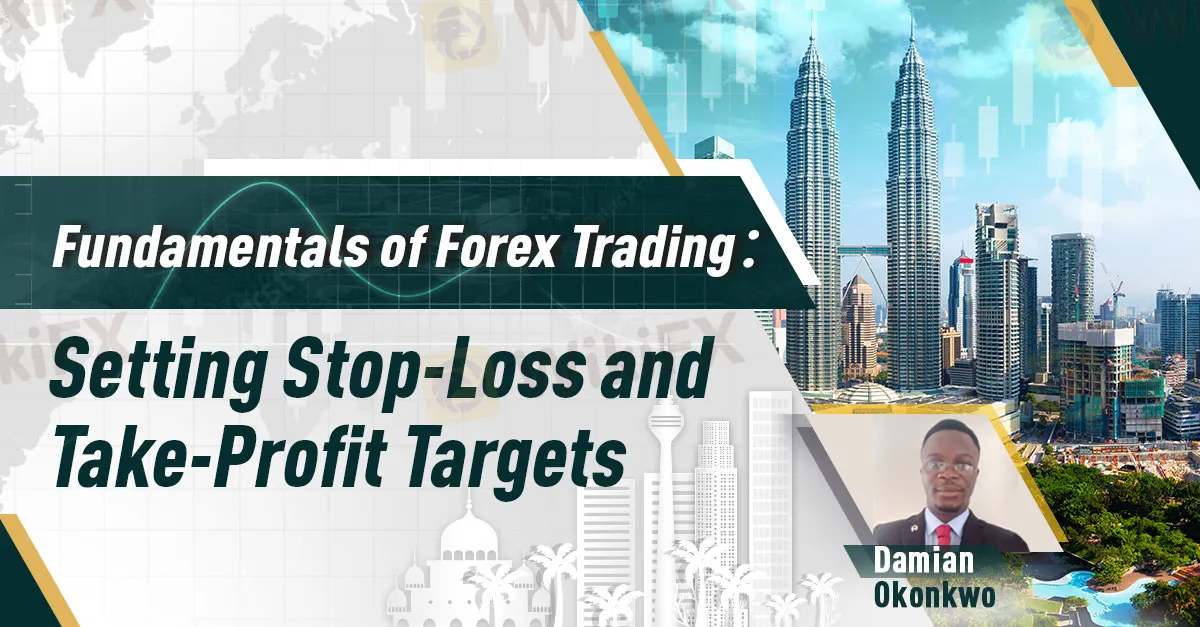简体中文
繁體中文
English
Pусский
日本語
ภาษาไทย
Tiếng Việt
Bahasa Indonesia
Español
हिन्दी
Filippiiniläinen
Français
Deutsch
Português
Türkçe
한국어
العربية
Fundamentals of Forex Trading: Setting Stop-Loss and Take-Profit Targets
Abstract:In the world of Forex trading, setting stop-loss and take-profit targets is crucial for managing risk and optimizing your trading strategy. These orders act as your safety net and profit-taking mechanism, ensuring that your trading decisions are disciplined and well-informed

By: Damian Okonkwo

Introduction
An important tool available for forex traders to manage their risk effectively while trading is the use of stop-loss and take-profit targets. However, not all traders today are at home with the best way to use these tools. In this article, we will delve into the fundamentals of how to set these targets to enhance your Forex trading strategy.
Understanding Stop-Loss Orders
A stop-loss order is a predetermined point at which a trader decides to exit a losing trade to limit potential losses. It acts as a safety net that helps traders avoid catastrophic losses when the market moves against their positions.
Important Factors to Consider When Setting Stop-loss Orders
Here are some essential principles to consider when setting stop-loss orders:
● Risk Tolerance: Before entering any trade, assess your risk tolerance. Determine the maximum amount of capital you are willing to risk on a single trade, usually represented as a percentage of your trading account balance.
● Technical Analysis: Utilize technical analysis tools to identify key support and resistance levels, trendlines, and chart patterns. These can guide you in placing your stop-loss at a strategic point where the market is likely to reverse.
● Volatility: Take into account the currency pair's historical volatility. More volatile pairs may require wider stop-loss levels to withstand price fluctuations, while less volatile pairs may need tighter stops.
● Time Frame: The time frame you're trading on matters. Short-term traders may need tighter stop-loss levels compared to long-term investors to account for intraday price swings.
● News and Events: Stay informed about economic events, news releases, and geopolitical factors that could impact the Forex market. Consider placing stop-loss orders beyond the reach of anticipated market volatility triggered by such events.
Setting Take-Profit Targets
A take-profit order is often seen as the opposite of a stop-loss order. It's the price level at which you decide to close a trade-in profit before the market reverses. Properly setting take-profit targets can help you secure gains and maintain discipline in your trading approach.
Important Factors to Consider When Setting Take-profit Targets
Here are key considerations for setting take-profit targets:
● Risk-Reward Ratio: It is important for traders to always consider their risk-reward ratio for each trade while setting their take-profit targets. A common ratio is 1:2, where you aim to make twice the amount you are risking. This helps ensure that your profitable trades outweigh losing ones.
● Technical Analysis: Just as with stop-loss orders, use technical analysis to identify potential resistance levels, chart patterns, or trend reversal points where you can place your take-profit orders.
● Trailing Stops: Consider using trailing stop orders that automatically adjust your take-profit level as the market moves in your favor. This allows you to capture larger gains during strong trends.
● Partial Profits: Instead of closing an entire trade at one take-profit level, you can consider taking partial profits at different levels to maximize potential gains while securing some profits.
Conclusion
In the world of Forex trading, setting stop-loss and take-profit targets is crucial for managing risk and optimizing your trading strategy. These orders act as your safety net and profit-taking mechanism, ensuring that your trading decisions are disciplined and well-informed.
Always remember that there is no one-size-fits-all approach to setting these targets. Your risk tolerance, trading style, and market analysis will influence your decisions. Continuously refine your approach, adapt to changing market conditions, and never forget the cardinal rule of trading: protect your capital.

Disclaimer:
The views in this article only represent the author's personal views, and do not constitute investment advice on this platform. This platform does not guarantee the accuracy, completeness and timeliness of the information in the article, and will not be liable for any loss caused by the use of or reliance on the information in the article.
Read more

Webull and Others Fined $275,000 for Incomplete Suspicious Activity Reports
Webull Financial, alongside Lightspeed Financial Services Group and Paulson Investment Company, LLC, has agreed to pay a collective fine of $275,000 following an investigation by the US Securities and Exchange Commission (SEC). The penalty was issued due to the firms’ failure to include essential information in suspicious activity reports (SARs) over a four-year period.

Alleged Concerns with TradeEU.global's Trading Practices
An individual trader has come forward with allegations of an unfavourable experience while using the services of the broker TradeEU.global.

Lured by False Promises: Malaysian Driver Lost RM218K to an Investment Scam
A 49-year-old e-hailing driver in Malaysia fell victim to a fraudulent investment scheme, losing RM218,000 in a matter of weeks. The scheme, which falsely promised returns of 3 to 5 per cent within just three days, left the individual financially devastated.

Italian Regulator Warns Against 5 Websites
The Italian regulator, CONSOB has issued a warning against five websites offering unauthorized financial services. This regulatory action aims to protect the public from fraudulent activities.
WikiFX Broker
Latest News
Saxo & Portuguese Bank Partnership
SEC Fines Broker-Dealers $275K for Incomplete SAR Filings
Elon Musk Warns of Imminent US Bankruptcy | Bitcoin Retreats from $100K
UK FCA Fines Barclays £40 Million Over 2008 Deal
WikiEXPO Global Expert Interview: Advanced Practices and Insights in Financial Regulation
Justin Sun Invests $30M in Trump-Backed World Liberty Financial
Lured by False Promises: Malaysian Driver Lost RM218K to an Investment Scam
FTX Sets March 2025 Timeline for Creditor Payouts: What It Means for Investors
What is an Economic Calendar? How it works
Pros & Cons of Automated Forex Trading
Currency Calculator



